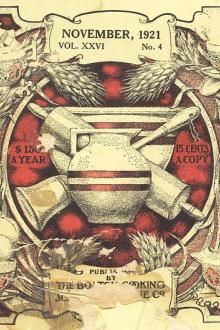Trees, Fruits and Flowers of Minnesota, 1916
Trees, Fruits and Flowers of Minnesota, 1916
Embracing the Transactions of the Minnesota State Horticultural Society,Volume 44, from December 1, 1915, to December 1, 1916, Including the Twelve Numbers of
Edited by A.W. Latham
Book Excerpt
Every True Horticulturist Has a Private Rainbow with a Pot of Gold at the End Mrs. T. A. Hoverstad, Minneapolis Song s. Grace Updegraff Bergen, Minneapolis The Joy of Service Gov. W. S. Hammond What Care I While I Live in a Garden A. G. Long, Minneapolis Song Trafford N. Jayne, Minneapolis Never Too Late to Mend--Unless You Are "80," A. J. Philips, West Salem, Wis. Reading Miss Marie Bon Right Living and Happiness--You Can't Have One Without the Other, T. E. Archer, St. Paul Closing Song Trafford N. Jayne, Minneapolis
* * * * *
"DON'TS" ISSUED TO PREVENT FOREST FIRES.--1. Don't throw your match away until you are sure it is out.
2. Don't drop cigarette or cigar butts until the glow is extinguished.
3. Don't knock out your pipe ashes while hot or where they will fall into dry leaves or other inflammable material.
4. Don't build a camp fire any larger than is absolutely necessary.
5. Don't build a fire against a tree, a log, or a stump, or anywhere but on bare soil.
Editor's choice
(view all)Popular books in Nature, Periodical
Readers reviews
4.0
LoginSign up
These days we're all frightfully worried about 'global warming'. But a simple reading of this book may ease those worries. Climate change is cyclical, as you will find, after reading about the varied agricultural products produced up in the far north...you betcha.
Back in 1916, Minnesota was much, much warmer than it is today. In 1916 Minnesota had an almost sub-tropical climate and was often known as the 'Tangerine Capitol of the World'. There was even a Minnesota mango and banana industry in its infancy.
Of course the sub-tropical climate and crops all radically changed following the Tungurahua volcano eruption of 1919.
Back in 1916, Minnesota was much, much warmer than it is today. In 1916 Minnesota had an almost sub-tropical climate and was often known as the 'Tangerine Capitol of the World'. There was even a Minnesota mango and banana industry in its infancy.
Of course the sub-tropical climate and crops all radically changed following the Tungurahua volcano eruption of 1919.
- Upvote (0)
- Downvote (0)
Popular questions
(view all)Books added this week
(view all)
No books found

 Free Download
Free Download






















